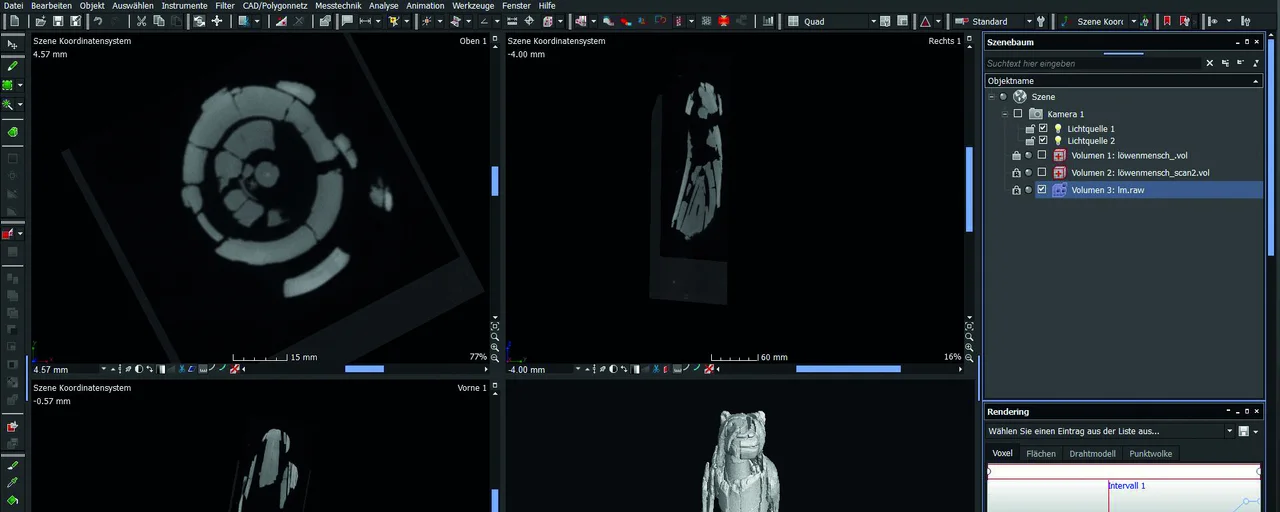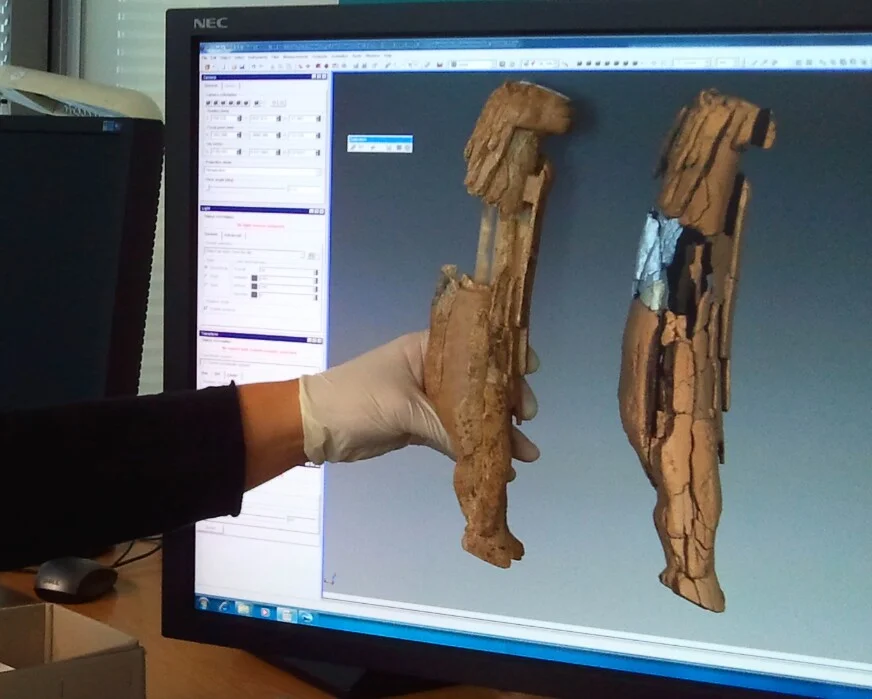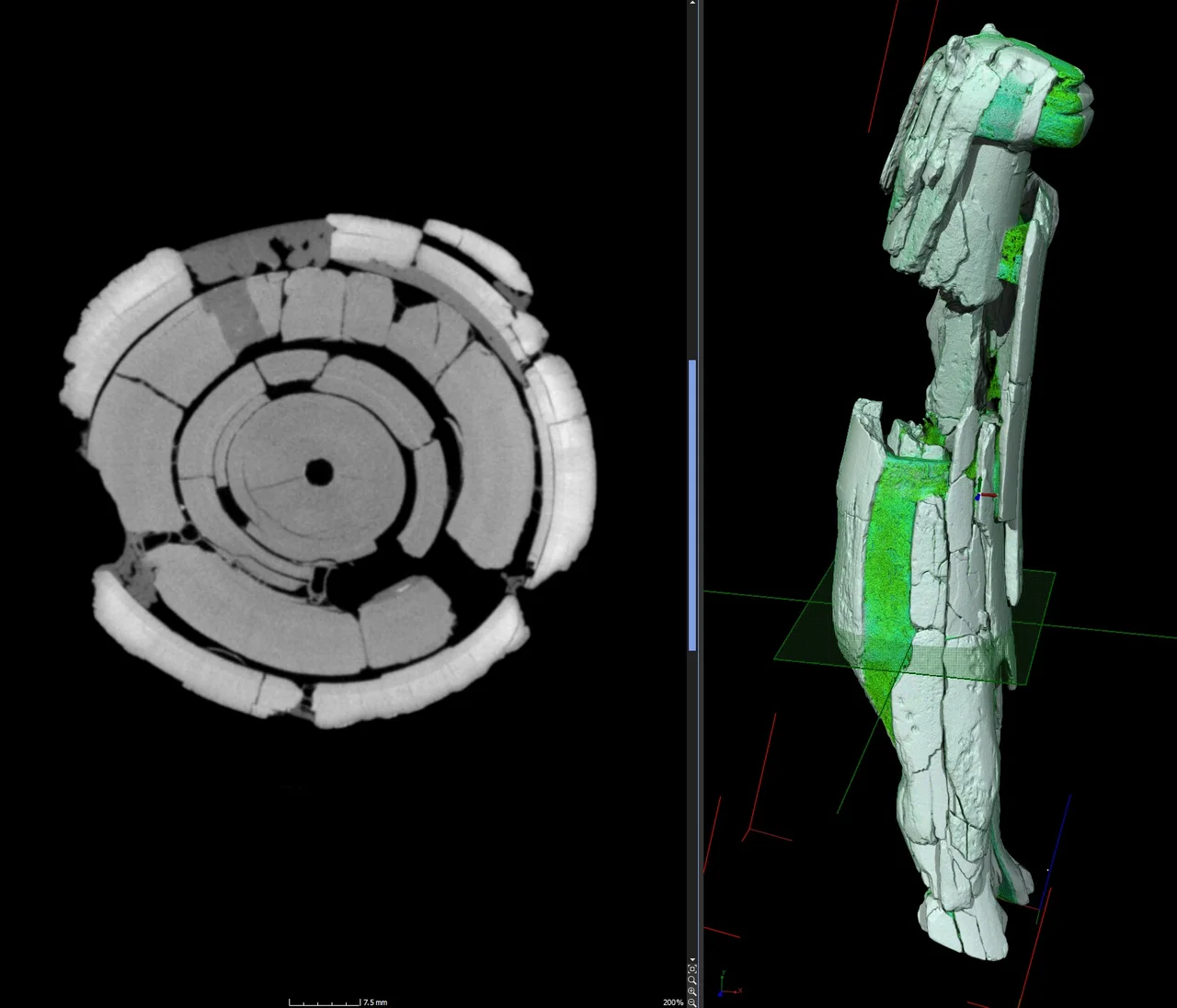This page is not compatible with Internet Explorer.
For security reasons, we recommend that you use an up-to-date browser, such as Microsoft Edge, Google Chrome, Safari, or Mozilla Firefox.

The Landesamt für Denkmalpflege (LAD) restored the Lion Man with the help of software developed by the Heidelberg-based company Volume Graphics
Lion Man: Volume Graphics Helped with Restoration
Since July 9, 2017, six caves on the Swabian Alb and in the nearby surroundings have been on the UNESCO World Heritage List. One of these caves is the Stadel Cave in the Hohlenstein-Stadel cave near Asselfingen in the Alb-Donau-Kreis, which is where the famous figure of the Lion Man was found. The 31-cm-high statuette, which was carved 40,000 years ago from a mammoth tusk, is one of mankind’s oldest works of art. The Landesamt für Denkmalpflege (LAD) restored the Lion Man with the help of software developed by the Heidelberg-based company Volume Graphics.
Many hours of work have gone into the restauration of the Lion Man. At the Volume Graphics User Group Meeting in 2015, Nicole Ebinger-Rist from the Landesamt für Denkmalpflege in Baden-Württemberg presented impressive images of how the Stone Age statuette was restored using CT data and the VGSTUDIO MAX software from Volume Graphics.
In 2009, 70 years after the Lion Man was first discovered in the Stadel cave, the discovery of new fragments inspired the LAD to non-destructively examine the 200 intact mammoth ivory fragments, which had already been found, and 80 newly found fragments with the help of CT. For this, the individual parts were scanned at the Research Institute for Precious Metals and Metal Chemistry (Schwäbisch Gmünd). Volume Graphics then prepared the CT data for the scientific analysis and produced a vivid film that showed the current state of research and the planned addition of the new parts.
With the approximately 80 new parts, the LAD was able to complete the figure, which had already been restored once in the late 1980s. At that point, the Lion Man was still missing essential parts: the right arm and a large area on the back, as well as substantial parts of the face.

Left: physical figure of the Lion Man, right: virtually assembled Lion Man
First, the old and newly found fragments were compiled in VGSTUDIO MAX. Afterwards, they were physically assembled in the restoration workshop.

In VGSTUDIO MAX, scientists were able to see at a glance which parts of the present restoration are original ivory and which were supplemented by a different material
The CT scan also answered questions that would otherwise have been difficult to clarify. The scientists were able to see at a glance which parts of the present restoration are original ivory and which were supplemented by a different material. In addition, the ring structure of the mammoth ivory and the angular position of the parts allowed for conclusions as to whether a fragment was in the right place.
The Lion Man got his name because he has both animal and human characteristics: a lion's head sitting on an elongated body, arms in the form of an animal’s legs, and the paws of a large cat, while his legs, feet, and upright posture are distinctly human.
You can see the Lion Man in the permanent exhibition on the first floor of the Museum Ulm am Marktplatz.
The decision to include the caves and Ice Age art of the Swabian Alb in the list was made during the 41st session of the UNESCO World Heritage Committee in Krakow in July 2017. Currently, the World Heritage List consists of 1,073 sites in 167 countries that are considered to be significant to the world due to their uniqueness, authenticity, and integrity. 832 of these are listed as World Cultural Heritage, 206 as World Natural Heritage, and another 35 sites as mixed cultural and natural sites.
More about making the World Heritage List:
https://stm.baden-wuerttemberg.de/de/service/presse/pressemitteilung/pid/hoehlen-und-eiszeitkunst-der-schwaebischen-alb-in-unesco-welterbeliste-aufgenommen-1/ (in German only)
http://www.unesco.de/kultur/2017/hoehlen-der-aeltesten-eiszeitkunst-sind-unesco-welterbe.html (in German only)
More about the Lion Man:
http://www.loewenmensch.de/lion_man.html